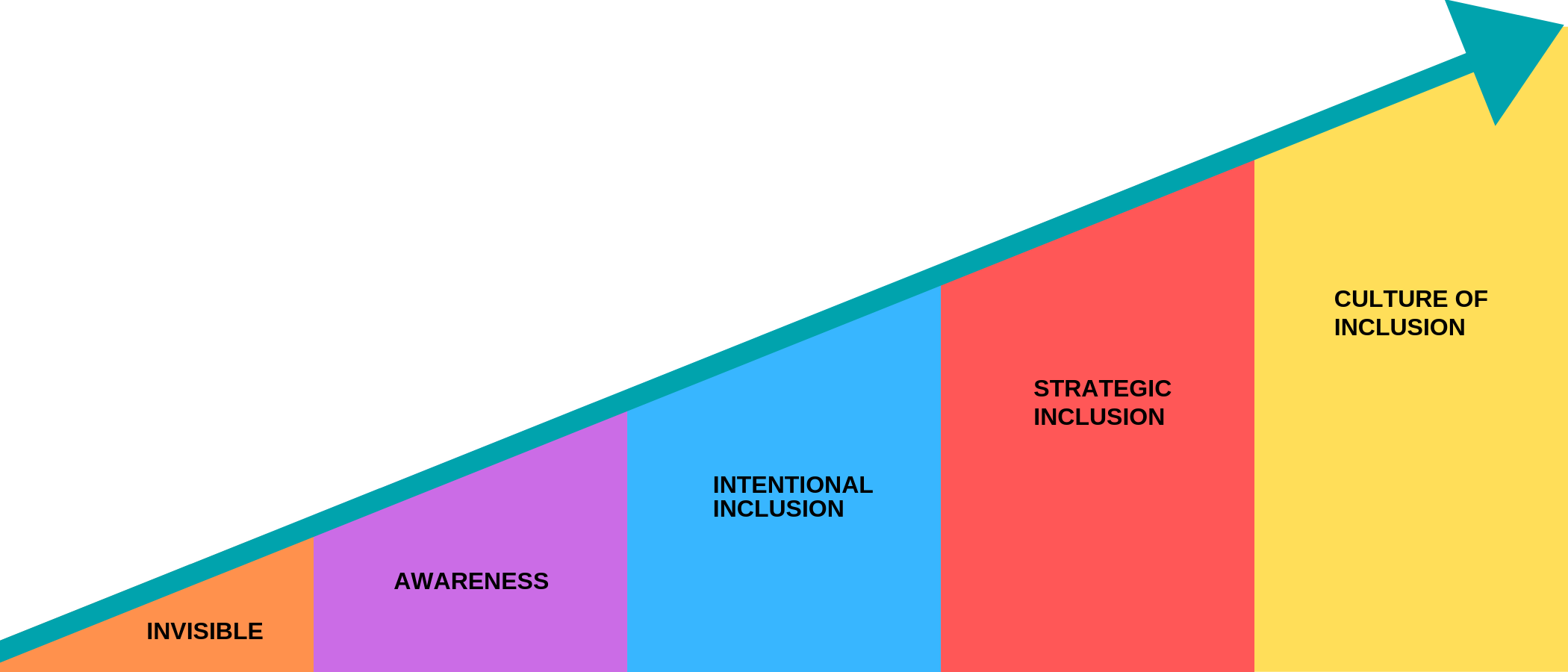2. Assess Inclusivity
How do you know if your organization has an inclusive board culture?
Once you have had the initial conversation with your board, the next step is to assess its current level of inclusion. The assessment tool linked at the end of this section will help the board complete that process.
Five levels of inclusion [1]

Invisible
Diversity and difference are barely on the radar, and there is no recognition of the value that inclusion brings to the board or the organization. Overt or subtle discrimination is present. When a discriminatory incident happens, it may be minimized and there is no attempt at redress. Individuals who face discrimination must deal with any of its negative impacts without support. There is also the feeling of not being valued or respected. Individuals can feel that they don’t belong, and that their perspectives are not welcomed. There is a very entrenched/simplistic sense of who is seen as “normal” and who is seen as “different”.
Awareness
There is some effort made to welcome under-represented people to the board, based on a belief that all people are equal and so should be given equal opportunities for participation. Discrimination is seen as somewhat important to address, but actions taken to address it lack adequate resources, do not happen consistently and are ad hoc.
Intentional inclusion
The board has made an official statement about the importance of inclusion and diversity, and a structural understanding of inclusion and inequity is being advanced in the formation of policies and procedures. Interventions are planned with the goal to incorporate more equitable practices and attitudes into the entire organization. People have made verbal commitments to inclusion work.
Strategic inclusion
Long-term, broad-reaching strategic measures are taken to decrease barriers to participation for people who have long been marginalized, with the understanding that focusing energy on those with the most barriers is important for everyone. Strategies to transform processes that maintain systemic discrimination and provisions for measurement and accountability are in operation. Efforts are made to understand and address the root causes and systemic issues that lead to exclusion and marginalization. When discrimination happens there are policies and procedures in place to address them.
Culture of inclusion
All layers of identity and difference are considered and supported, and systemic processes for maintaining inclusion are fully woven into the organization. The value of all people is a widely held value, and everyone is comfortable with and sees the benefits of diversity, so exclusionary incidents rarely happen[2]. Continuous improvement of inclusion is embedded within the organization. Inclusion is a way of life and all members are supported to reach their full potential.
We have created an assessment tool for you to use with your board based on the levels of inclusion, which may be helpful to determine the board’s current level of inclusion.
You can find the levels of inclusion assessment tool in Appendix 2.
- Adapted from the Alberta Urban Municipalities Association (2014). Municipal Evaluation Tool: Measuring Inclusion. Retrieved from Alberta Urban Municipalities Association. ↵
- Building a culture in which exclusionary or discriminatory incidents rarely happen is very different than having a governance board culture where the people on the board with power and privilege aren’t aware that others are being excluded through language, structures or practices. A culture where exclusionary or discriminatory incidents rarely happen is not often a culture that forms organically. Instead, it requires deliberate discussion and action often over an extended period of time. ↵
